I’m always excited to try new classes and workshops with the girls, especially activities that allow them to learn more about tech and science. We recently did just that during a one-day workshop at the MKR LAB where the girls and I learned how to make a simple circuit on fabric. This hands-on and immersive experience allowed us to learn more about how wires work as we crafted an illuminated wearable. A super cool experience, I wanted to learn more about the lab and the women behind it. Read on to discover more about the MKR LAB and its founder, Sarah Landis.
Interview with Sarah Landis, Founder of the MKR LAB
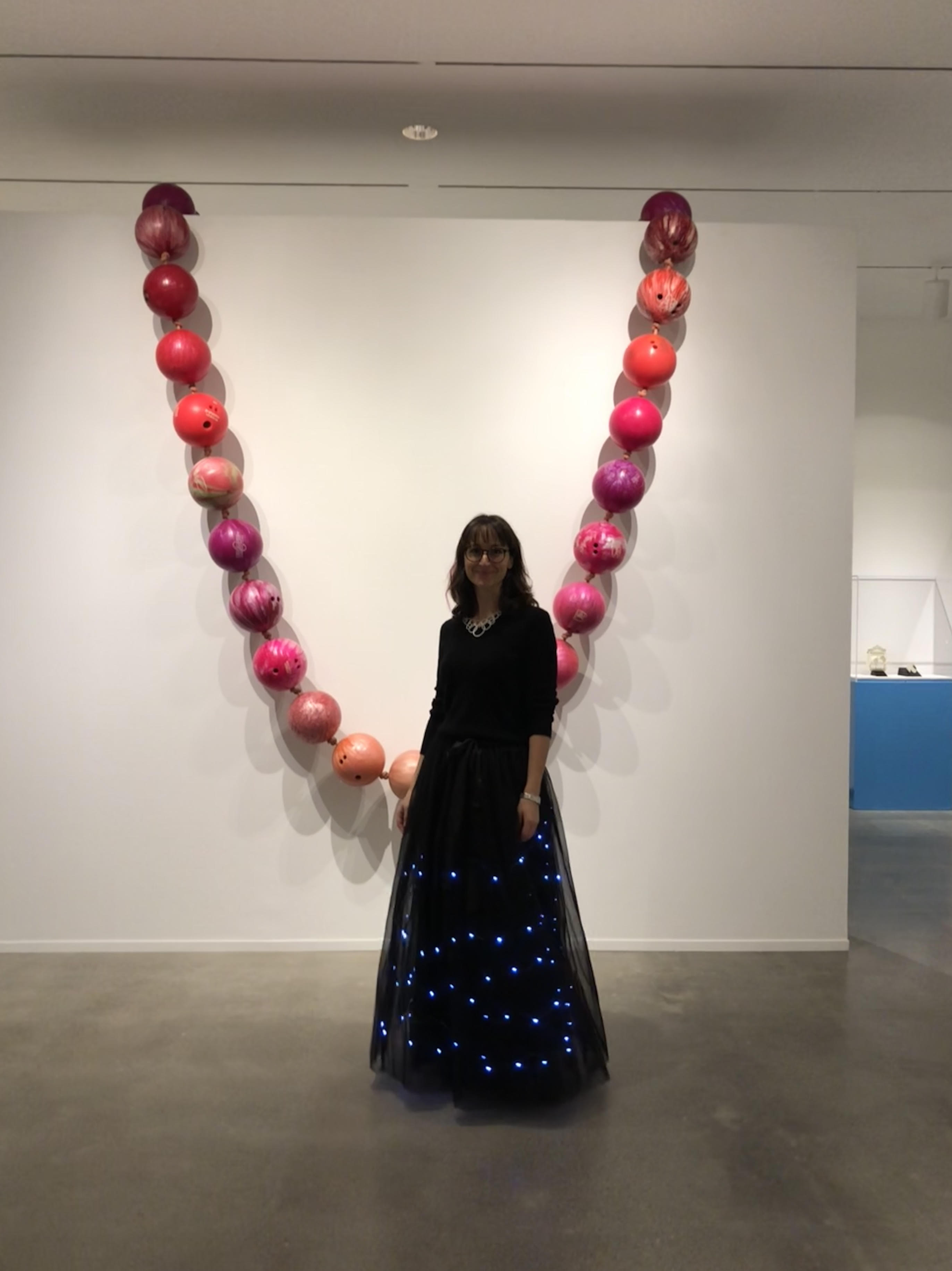
Weekend Jaunts: Tell us about your journey as a maker?
Sarah Landis: I’ve always been a maker. Since I was a little girl I’ve loved working with my hands. My mother taught me needlepoint and how to crochet and sew, and later passed on my great grandmother’s unfinished quilting blocks to me. In college I took photography classes and continued with that at the International Center for Photography in NYC in my 20s. I also took drawing and painting classes in college and for a short time I blew glass at Brooklyn Glass. My mother-in-law taught me how to knit and I really love to take that very utilitarian skill and use non-traditional materials, like gold wire and pearls. During college I interned at the Baltimore City Paper and I filled in for the webmaster for a short time, back when web pages were coded by hand.
But it wasn’t until recently that I began to merge tech into my projects. I love the idea that we can make what we want. In the past few years tech components have become widely available and affordable, empowering people to use them in new and creative ways. At first it takes some time to figure out what things like microcontrollers can do and what you can attach to them, but once you begin to adopt the maker mindset, the possibilities are endless.
For Halloween this year I embedded lights into a tulle skirt and controlled them with an Arduino Nano microcontroller. It was a total hack. I envisioned using individual addressable lights, sewing each one on and connecting it to a microcontroller, but when I went to price it out the components alone would have cost well over $100. So I bought 6 strings of fairy lights, soldered a motor controller onto an Arduino Nano microcontroller, which enabled me to power the LEDs directly from a battery and control each string of lights independently. After I sewed each string of lights into my skirt, I had fun creating the blinking patterns. It was a big hit at the Katonah Museum of Art’s Fall Fling. I also 3D printed a pair of horns, attached them to servo motors connected to an Arduino Nano hidden inside a top hat and programmed them to twitch periodically. Next year I want to build a pair of motorized articulated wings that will open up on cue. That’s going to be an engineering project as well as coding.
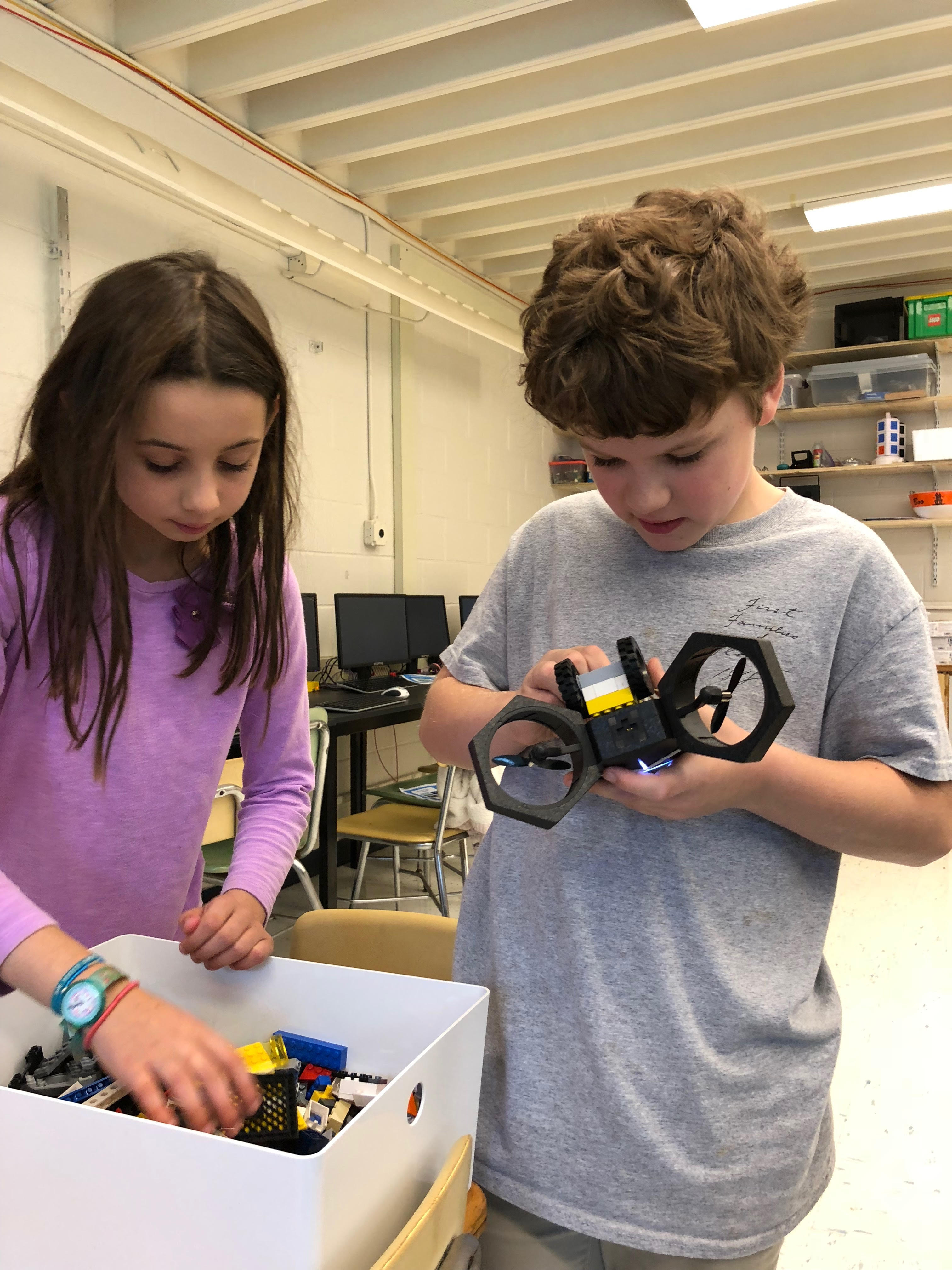



Weekend Jaunts: How did the idea of MKR LAB come about?
Sarah Landis: A few years ago we gave our two oldest kids Raspberry Pi computers for Christmas, but they didn’t know what to do with them. They needed someone to show them all the things they could do and how to begin. That’s true for a lot of things. If you have someone to guide you, and if that person is truly excited about the thing they’re sharing with you, then it sets you up for a really positive experience and you’re more likely to continue.
Over time I found myself saying “wouldn’t it be awesome if there were a place where people could go to make things together, maybe take a class, and if there were other people around to bounce ideas off of and get feedback or help?” I guess I was looking for a creative community, especially up here in Northern Westchester where it can tend to be isolating. I wanted that for my kids and also for myself.
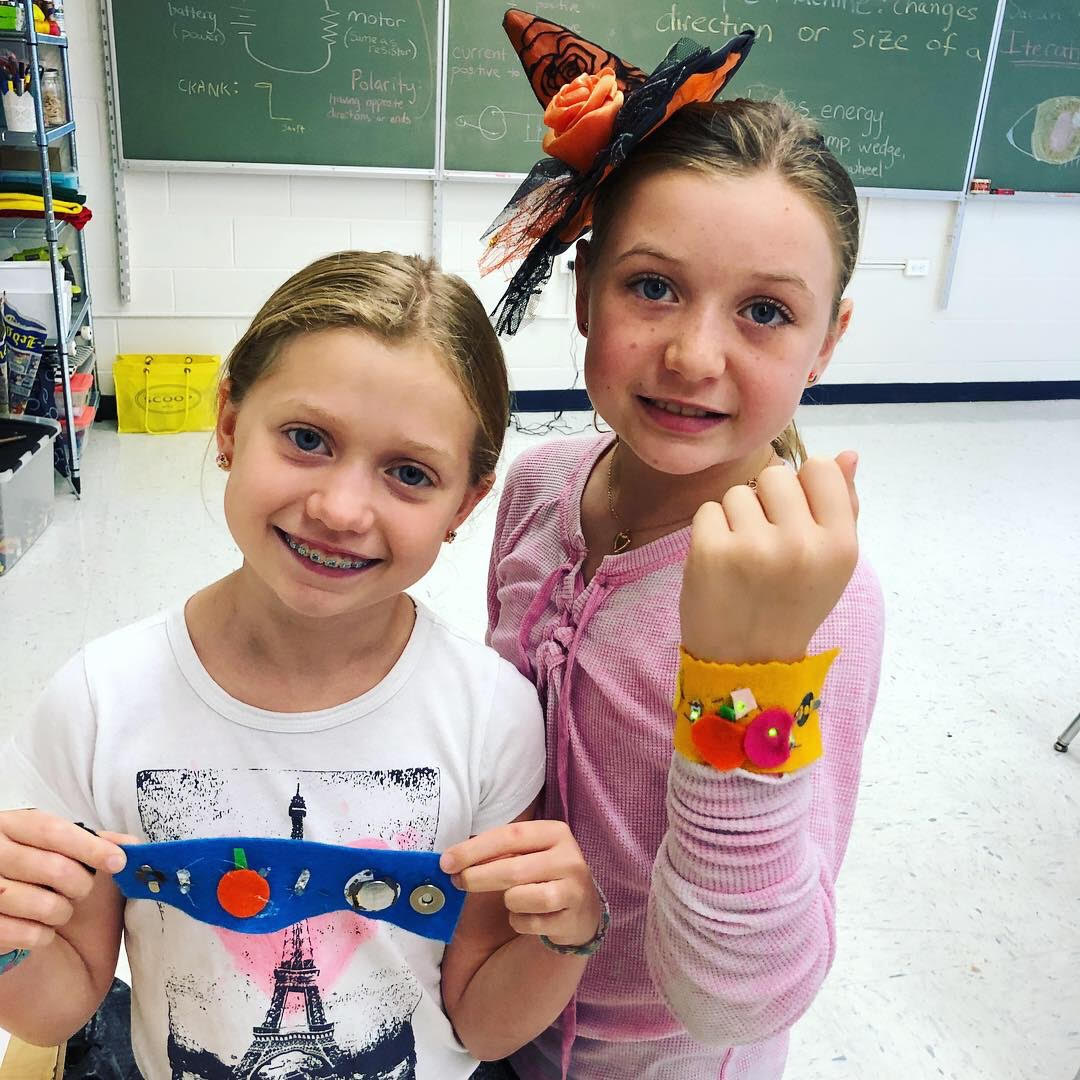



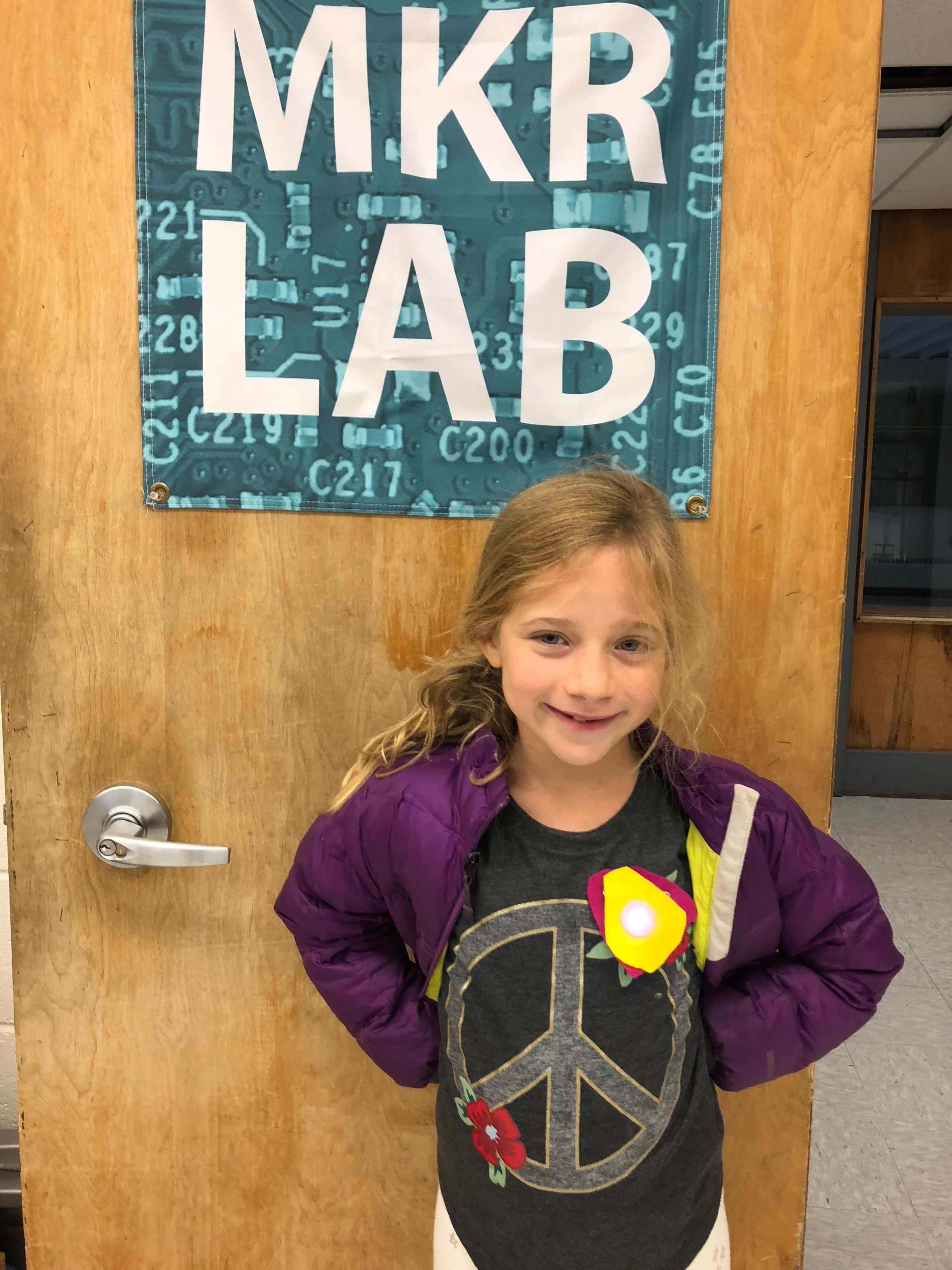



Weekend Jaunts: Why are STEAM-focused classes important for kids?
Sarah Landis: We know that our world is changing rapidly and that we can’t even begin to imagine some of the fields our children will pursue. That’s a part of why Carol Dweck’s work on the growth mindset is so powerful right now: what’s most important is that we cultivate the ability to persevere, try new things, and build mastery. People need to be able to learn and grow throughout their lives. STEAM-focused classes help us cultivate the skills we need to do that.
Firstly, there’s the matter of basic skills and literacy. Computer programing has become a matter of basic literacy. Even if you never intend to be a coder, it’s important to understand how a program, app or website is created.
Secondly, STEAM classes foster critical thinking. Students have to create a plan, because the order in which you place your computer codes is important, as is how exactly you engineer a physical design. When a project doesn’t work as expected, students assess it, redesign or debug, test it out again and repeat until they are satisfied. This happens in every one of our classes at MKR LAB and it builds both critical thinking and grit.
A lot of STEAM projects give students instant feedback: their robot follows their commands or it doesn’t. The teacher, who may have been grading assignments in a traditional school, now morphs into a guide who shows them what they can accomplish, challenges them, and helps them when they get stuck. The student becomes more involved in their progress and begins to take greater ownership of their learning. That last idea is important in cultivating lifelong learners.
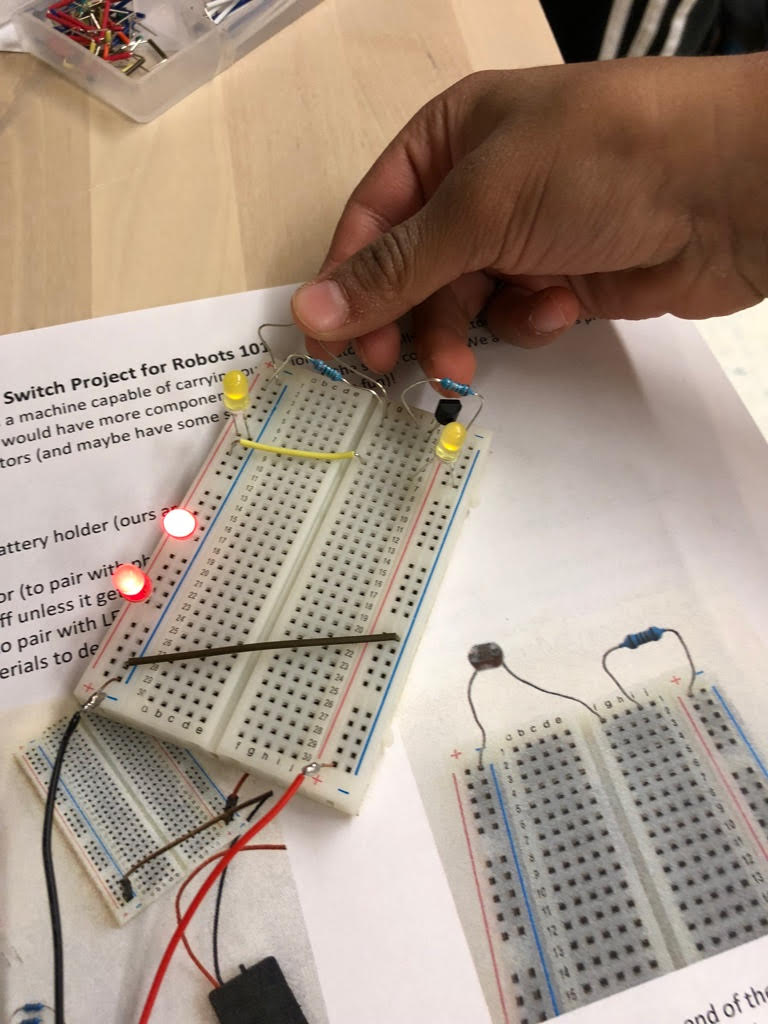



Weekend Jaunts: Tell us more about the programming at the MKR LAB?
Sarah Landis: MKR LAB offers STEAM classes & workshops. Our goal is to give students the tools they need to unlock their creativity in designing the tech they want to see, enabling them to be creators, not mere consumers. We explore coding, robotics, engineering, physics, electricity and circuitry, and game design. I’m really excited about physical computing, which is when you design programs to make real objects do something. It can be as simple as switching on a light (like my Halloween skirt), or it can be much more involved, like creating and wiring a glove with sensors that will act as a game controller, making tech feel more “human”. We do that in our microcontrollers class and we’ll get into it in eTextiles too.
Another class that I love is Drones: Design, Build, Fly. I wanted to offer something with drones simply because they’re really fun. But anything we offer has to have educational value too, or it’s just a toy. So after we learn about how our drones work, we take them apart and rebuild them as vehicles and we have to experiment with some physics principles to do that well. Then we totally reprogram our drones because now they’re on the ground and they function differently. We’re using a block code (AKA click & drag) program to do that, which makes it approachable for elementary students too. So the kids are learning how to code, how to create subroutines, create the controller they need, and they’re engaging in the design process all while having a lot of fun.
In our STEAM Lab class we’re engage students in the circuitry and basic engineering they will need later to do physical computing. I’m really excited to see these students evolve. When they came in September they looked for explicit instructions for every step. Now I can give them more choices and ask what they think they should do. They’re becoming makers and are more comfortable trying something that they’re not sure will work.
And we’re launching Open Lab time, when people can come in and work on individual projects, be inspired by what other people are doing, or get some advice. People can drop-in or pay a monthly fee and they’ll have access to our 3D printer, they can create 3D designs, and explore our virtual reality set. We have some supplies on hand and can help ensure that components are compatible.
Weekend Jaunts: How is the MKR LAB different from what’s out there?
Sarah Landis: We’re working really hard to use open source software and widely available components whenever possible so what our students learn with us is immediately relevant and transferable. That means that we’ve had to develop our own curriculum in many cases. It would be a lot easier to just buy into the LEGO Mindstorms products and hire a teen to run a class, but it wouldn’t be as meaningful for our students. Another thing that sets us apart is our deep tech expertise. Our Chief Technology Officer, Clark Landis, has a masters in computer science and has developed sophisticated trading systems. He is actively involved in designing curriculum and scouting out products, components and materials that we use at MKR LAB. He’s also currently teaching a few of our higher-level classes and is a fantastic resource for our students. Lastly, adults teach our classes. While we’d love to work with student interns, a responsible adult runs each of our classes. For now that’s Clark and me, but when we begin to add staff we will continue to make sure there is an adult in charge.
Weekend Jaunts: What do you hope kids will get from your classes, workshops?
Sarah Landis: Sometimes science and technology can be daunting. I want to demystify it for our students, open the door for them and show them it’s accessible and can be really fun. The student comes full circle when he or she is comfortable enough with the tech to begin to use it creatively and the A, which stands for art, in STEAM comes into play. Play is actually a great word here. When our students start being playful, start asking “what if I change this” or “how can I …” they have become makers.
Weekend Jaunts: Anything else to add?
Sarah Landis: As tech has infiltrated our lives, it’s all too easy to become consumers, to get lost in our “sticky” social media apps, games or just browsing the Internet. But when we begin to use tech creatively, creating our own programs, apps, games, 3D designs, etc., we use a different part of our brains and we can create what we want. This is the first step in creating the new biomedical devices of the future, in engineering climate solutions and in designing products that improve our lives. Creating a simple eTextiles project might appear to be some fun bling, but if it opens a door for a student that is huge!
Check out Sarah rocking her illuminated skirt:
